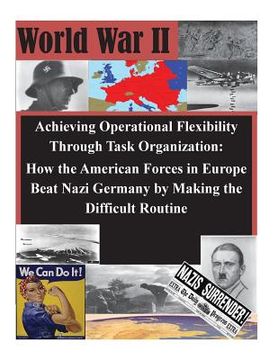Share
Achieving Operational Flexibility Through Task Organization: How the American Forces in Europe Beat Nazi Germany by Making the Difficult Routine
U. S. Army Command and General Staff Col
(Author)
·
Createspace Independent Publishing Platform
· Paperback
Achieving Operational Flexibility Through Task Organization: How the American Forces in Europe Beat Nazi Germany by Making the Difficult Routine - U. S. Army Command and General Staff Col
Choose the list to add your product or create one New List
✓ Product added successfully to the Wishlist.
Go to My Wishlists
Origin: U.S.A.
(Import costs included in the price)
It will be shipped from our warehouse between
Monday, July 29 and
Monday, August 05.
You will receive it anywhere in United Kingdom between 1 and 3 business days after shipment.
Synopsis "Achieving Operational Flexibility Through Task Organization: How the American Forces in Europe Beat Nazi Germany by Making the Difficult Routine"
This study proposes operational flexibility resulted from a unique American way of war developed during the interwar period by veterans of the First World War. Three factors - common doctrine, carefully selected leaders, and an effective organizational structure - provided senior commanders the organizational flexibility they required in combat. Without this flexibility, the Army would have had difficulty executing its breakout from the Normandy bridgehead, pursuing the retreating German forces across France, and quickly thwarting the Nazi offensive in the Ardennes at the end of 1944. The interwar school system and stable doctrine enabled a common understanding on how to solve tactical and operational military problems. The high quality and close-knit officer corps, particularly the Regular Army officers who served in senior leadership positions, facilitated the process of unit integration. The design of large unit organizations, and the staff structure which supported them, greatly simplified the process of moving divisions between units to accommodate the changing situation in the face of an aggressive and adaptable enemy. There is a clear parallel between the roles of U. S. Army World War II era corps and modern divisions, and this study highlights several recommendations to ensure flexibility in future conflicts.
- 0% (0)
- 0% (0)
- 0% (0)
- 0% (0)
- 0% (0)
All books in our catalog are Original.
The book is written in English.
The binding of this edition is Paperback.
✓ Producto agregado correctamente al carro, Ir a Pagar.

